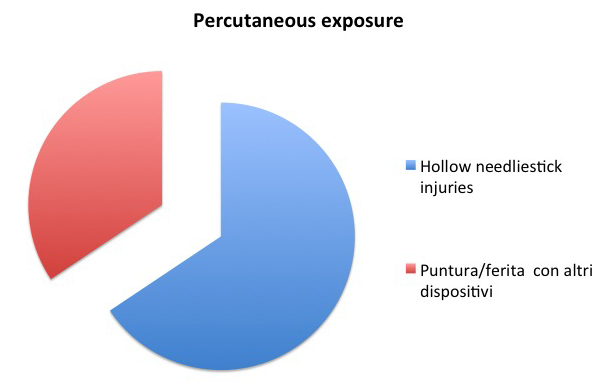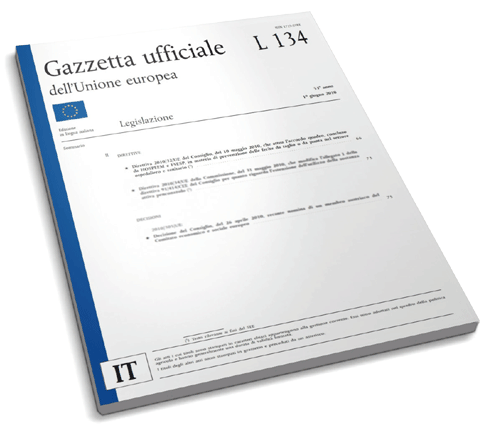Prevention, the first step to greater safety
Every year 100,000 incidents of exposure are estimated to happen, if all health care workers reported regularly each accidental sharps injuries. This would cost 78 million euros a staggering figure. If we look at the number of incidents actually reported we still get a figure (28 million euros) that is far greater than the money needed to ensure safety for all health care workers. These figures were estimated taking into accounts only post-exposure monitoring, diagnosis and preventive measures. They are estimated to amount to 750-1320 for each exposure.
If we consider that 63% of percutaneous exposure is due to hollow needlestick injuries and 33% is due to other sharps (including lancets and suture needles).

Today we know that many of these accidents can be avoided just by using the technology that is already available. Research in our country and in the US, in France and in the UK, has amply proved that if the resources that are currently spent to manage exposures were used for prevention, instead, they would be more effectively used. Prevention, therefore, could be said to be actually cost-free.
This is because healthcare resources are not managed properly and this is especially egregious vis-à-vis the safety issues healthcare workers face. Even in these times of economic crisis safety can become an asset that help protect human resources and improve services.
Italy, thanks to the Italian Study Group on Occupational Risk of HIV infection (SIROH) started in 1986 by the National Institute for Infective Diseases L. Spallanzani, is in the vanguard of research and monitoring projects of accidental sharps injuries. Yet, there are pockets of resistance to change, where financial reasons are usually mentioned when excuses are made.
Italy has been leading the way even when it comes to legislation, starting from the Constitution, which, in article 32 states that " The Republic protects individual health as a basic right and in the public interest", including all legislation passed in the 1950s, to European law such as D.Lgs 626 and the Consolidated Law (D.Lgs 81/08 et seq.). In particular, the first integrative decree of the Consolidated Law, D.Lgs 106/09, in article 272, on the matter of activities exposed to biological risks, states "the employer shall implement technical, organisational and operational measures to prevent workers from being exposed to biological risk.... 2) in particular, employers shall....c) adequately plan work processes using safety devices preventing workers from accidental exposure to biological agents". In 2008 Senators Bianconi and Vizzini promoted a bill specifically on protecting workers from accidental sharps injuries, along the lines of what had been done in Spain, Germany and in the US.
The European Union then decided to implement the Framework Agreement on prevention from sharp injuries in the hospital and healthcare sector concluded by HOSPEEM (European Hospitaland Health Care Employers Association www.hospeem.eu) and EPSU (European Federation Of Public Service Unions www.epsu.org) with Directive 2010/32/EU.

The purpose of the Directive is to implement the Framework Agreement so as:
a. to achieve the safest possible working environment for healthcare workers
b. to prevent workers' injuries caused by all medical sharps (including needlesticks);
c. to protect workers at risk;
d. to set up an integrated approach establishing policies in risk assessment, risk prevention, training, information, awareness raising and monitoring;
e. to put in place responses and follow-up procedures.
The directive also lists the means that shall be used to achieve these objectives. They are:
- risk assessment
- developing a coherent overall prevention policy, which covers technology, organisation of work, working conditions, work related psycho-social factors and the influence of factors related to the working environment
- specifying and implementing safe procedures for using and disposing of sharp medical instruments and contaminated waste.
- eliminating the unnecessary use of sharps by implementing changes in practice and on the basis of the results of the risk assessment, providing medical devices incorporating safety-engineered protection mechanisms
- information, awareness-raising and training for workers
- Vaccinations
Today it is common knowledge that introducing safety devices leads to a dramatic drop in the number of accidents reported, a decrease that can even range from 80% to 93%, especially when such introduction includes adequate information and training programmes. This was proved by the SIROH study and many other studies aborad (GERESin France, Vallis et al. in Spain, Cullen et al. in the UK, Wicker et al. in Germany, EPINET in the US, Visser in Canada). These results are universally acknowledged...in the end, it's just a matter of will.
Dimitri Sossai




